Recording drums and miking drums are challenging endeavors. A drum set recording consists of many parts that contribute to their unique sound. To get the best final product, you’ll need to mic the individual drums on the set separately. While this sounds like a complex process for beginners, this blog will help you have everything you need to achieve an exceptional sound that will impress everyone who hears it. After reading this guide, people will assume that you have recorded your drum music professionally.
The positioning of drum kit microphones around the drum set and the choice of microphones may have a significant influence on the recorded sound. The recorder man method only requires four mics (so four total inputs into your DAW along with four preamps), and two of the microphones can be more commonly found dynamic mics. There are no hard and fast rules for microphone location or selection, so take your time and experiment. Going forward in this blog, we will see how to mic a drum kit perfectly!
Below, we will discuss how to mic a drum set at standard placements for individual drum kit pieces below.
How you can Position Microphones for your Drum Set
1. Hi-Hat
Consider using a cardioid microphone aimed in the center of the drum mix if the style necessitates the hat being a separate component of the drum mix rather than just being organically duplicated by an overhead pair. There are types of microphones, but Hi-Hat is the best microphone drum set for the artist.
Because the signal is predominantly composed of high frequencies, a low-frequency roll-off might be used in the mixing console to keep the overall sound bright and crisp while maintaining the high frequencies.
The location will be between the hat and the snare, and you will have to establish a balancing point for each drummer’s style to get the desired sound.
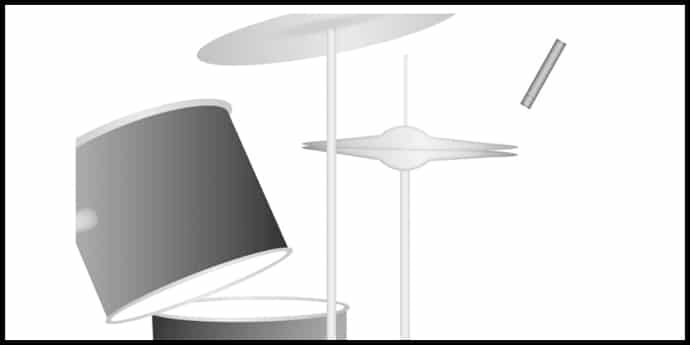
2. Bass Drum
If the bass drum has a hole in the front skin, this location offers a shortcut to capturing the bass drum with regulated accuracy and precision. Place a microphone in or near the opening and experiment with location, angling, and distance to see how it works best for this particular use.
This will provide the best possible outcomes. Wind difficulties will be reduced if you are angling (a lot of air is moved by the bass drum). The proximity effect will change the total bass frequency response using the distance effect.
It all depends on the tone you want to create and the instrument or drummer you choose. Occasionally, positioning the microphone slightly outside the drum adds more intensity to the recording.
If there is no hole in the front skin of the drum, it is recommended to locate a position outside the drum, often on the kick side of the drum, where you may play jazz or folk music.
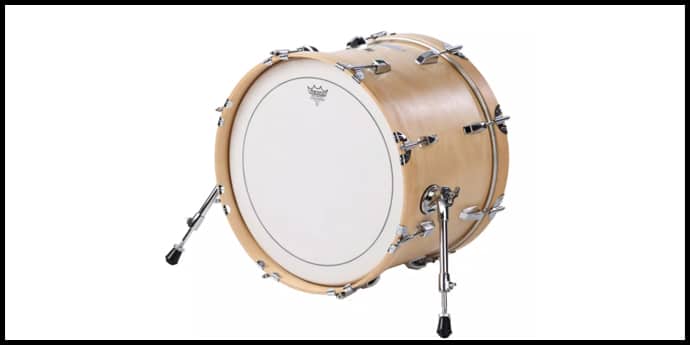
3. Snare Drum
If there is an “in-your-face” punch to the drum, a double microphone arrangement with one mic on top and one below the drum may be beneficial; the upper mic will concentrate on it, while the bottom mic will focus on the high-frequency snare bite from underneath the drum. Change the polarity of one of them and mix them to get the correct balance.
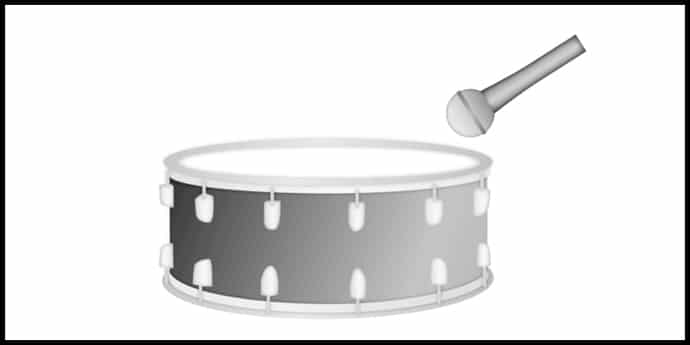
4. Tom-toms
While it is common and sometimes appropriate for jazz drummers to forego the use of toms mics altogether and instead rely on a precisely placed best drum overhead mic to achieve the desired drum sound balance, pop and rock drum sound require a closer miking technique to achieve a highly isolated toms signal that can be processed separately.
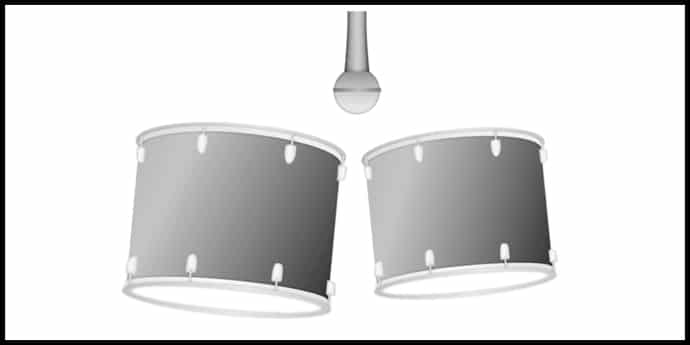
5. Kick Drum
Due to the tremendous measure of sound tension being made by the kick drum, it is critical to utilize a mic with a high SPL rating. The most well-known mic to use is a wide-stomach dynamic mic by a long shot. However, some condenser mics are rough to the point of taking care of a kick drum. The mic additionally needs to have a decent low-recurrence reaction, especially while recording heavier styles of music.
Arrangement choices for a kick drum mic include:
- 1-2″ external the opening in the resounding head or from the actual head on the off chance there is no opening.
- Inside the drum, a way off 2-3″ pointed where the mixer connects with the player head (see Fig. 135).
- Beneath the lofty drum position, pointed where the blender connects with the hitter’s head.
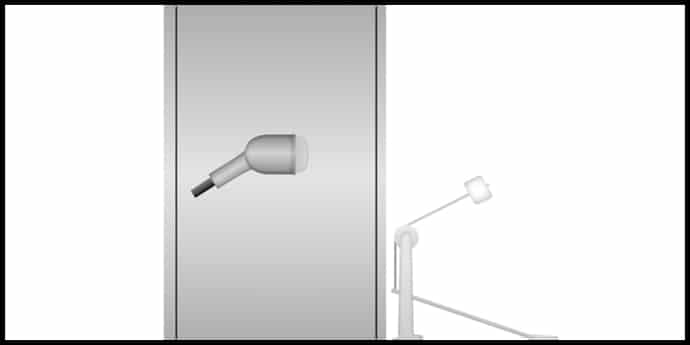
6. Cymbals
Small-diaphragm condenser mics generally are a decent decision if individual mics are needed or wanted. They can be put away off 3-4″; however, freedom ought to be checked, so a swinging cymbal does not hit them. Likewise, with the hi-hat, cymbals are typically present enough in the overheads that are miking them exclusively is not required.
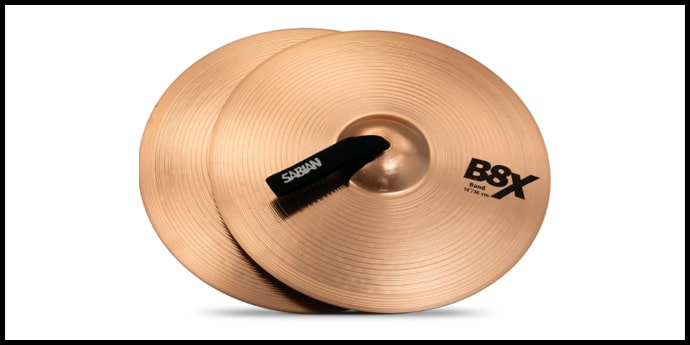
7. Drum Overheads
A single drum overhead mic can be mounted above the drummer’s head in a simple setup. Two drum overhead mics must be the same make and model and have a cardioid pickup pattern. Small-diaphragm condensers are the most common, although wide-diaphragm condensers are also a good option. A more exciting drum sound comes from hard-working overheads on the left and right sides to create a stereo drum sound.
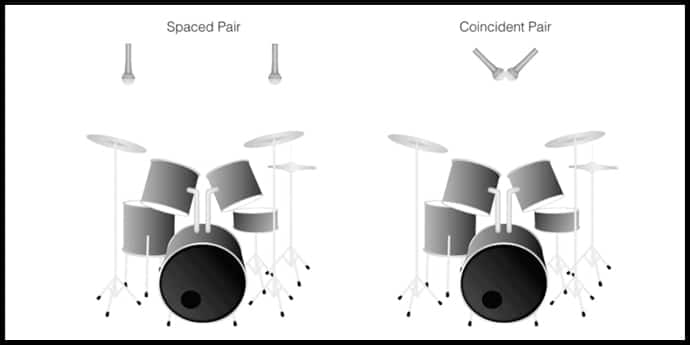
8. Distant Miking Drums
A large, thick drum can produce sound with a distant mic on a drum kit. It may take trial and error and is heavily influenced by the room’s acoustics, but the results are often worth it. Some possibilities include:
- A mic is placed at the other end of a large loading bay (or additional sizeable open space).
- Putting the mic down the hall with the kit.
- A drum mic placement at the top of a long ladder while the drum kit is down.
- The mic is placed on the other side of the closed door.
Conclusion
Hope your doubts regarding drum mics are cleared. You can also pick how to clean the drum set. Assuming that you require some investment to set up every amplifier appropriately, you will wind up with a fantastic drum unit recording. Notwithstanding, on the off chance that you cut corners and don’t set up all the mics accurately, regardless of how well you play, it won’t sound extraordinary when you play it back. We recommend planning ahead of time and running a few tests in the space before your recording day! However, in certain instances, a solitary receiver can assist you with recording your drums to an acceptable level in specific circumstances.
If you find this blog helpful, you can read more about the best electronic drum pads and the best spitfire audio instruments.









